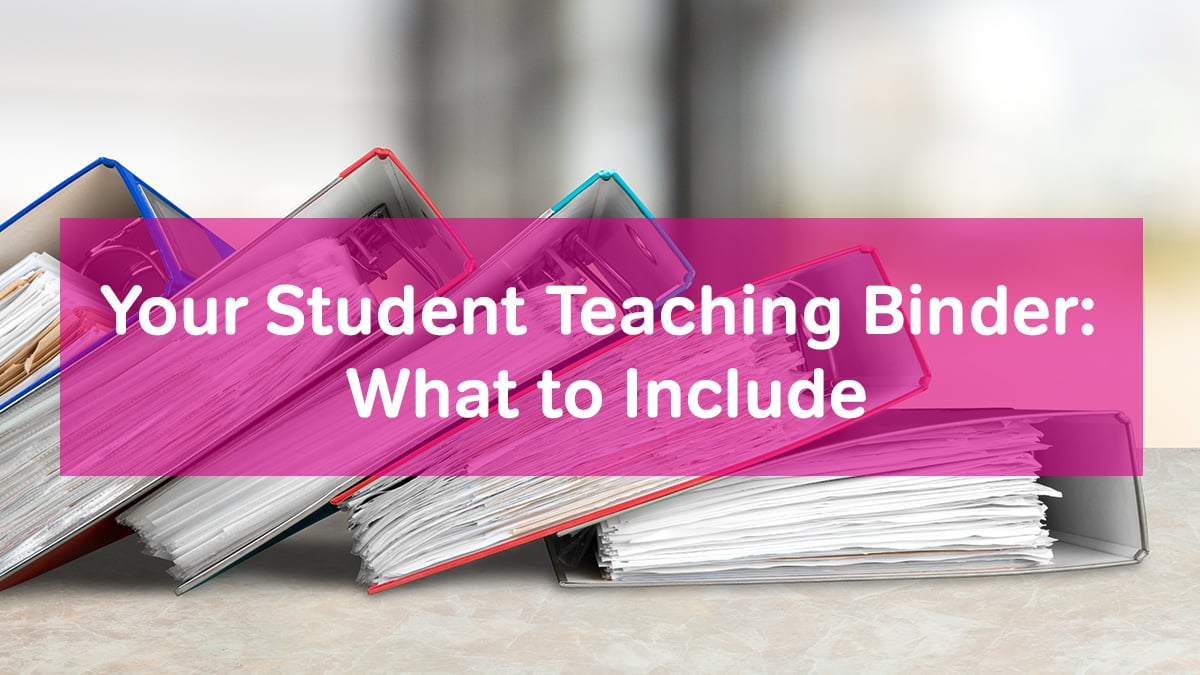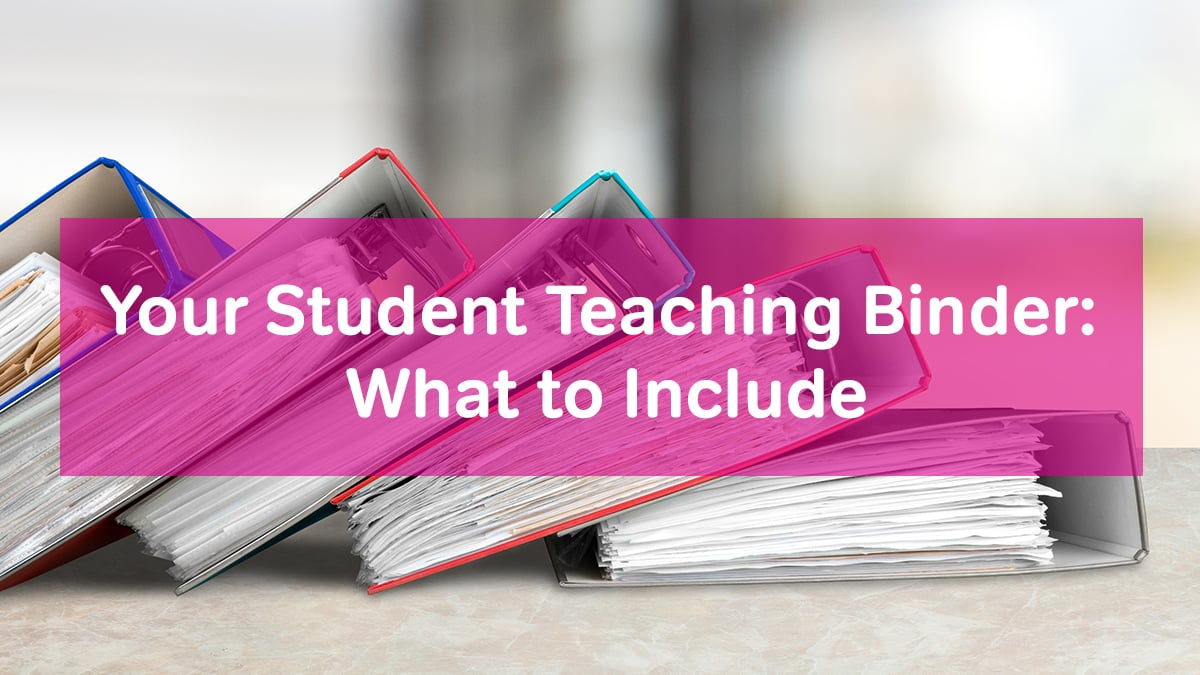
A new student teacher often looks like a deer in headlights. They’re full of anxious anticipation to find out what the experience has to offer. It may take some time for you to get your bearings, but a student teaching binder is a great way to quickly acclimate to the surroundings and get started on the right foot. If you're lucky enough to find a great mentor teacher, they will often take the time to put a binder together for you! But any student teacher can create a binder for themselves, which can help them navigate the experience. Here are some things that you can include in your student teaching binder.

Class Roster
Learning the names of every student in the class is vital. To do this, you need to have access to a class roster that you can refer to from the moment you arrive. Rosters with pictures are even better if they’re available.
Classroom Procedures
How do students hand in their papers? What should you do to get their attention? What should they do if they miss a day? Chances are that your mentor teacher already has classroom procedures in place for all of these things and more. Find out what these procedures are. And as you observe your mentor teacher, write the procedures down so you can continue to use them.
Weekly Planner
Time management is essential as a teacher. A weekly planner allows student teachers to determine what needs to be done and when. It’s also important to include the classroom daily schedule, as well as the district calendar to know when the school has days off.
Lesson Plans and Templates
There are lots of ways to write lesson plans. The binder could include some information on tips for creating your own lesson plans. It could also include several examples, or even templates that you can use to make lesson planning easier and more effective.
Standards
State and national standards should be referred to when creating lessons. Many templates require standards to be included. In fact, it’s a good idea to include standards on lesson plans to prove that you can write lessons that help students learn the information that they’re supposed to know.
Forms
You never know when behavior forms or medical incident forms will need to be completed for one of the students. Having these on hand and in an easy to locate place is beneficial. Along with the forms, include the school handbook for discipline, handling incidents, and more. Read through it in order to know what is expected of you and the students. You could also include contact numbers for parents, administrators, and others that you may need to call or email during the day.
Reflections
During the day you’re going to want to take notes on the students’ behavior, your teaching successes and failures, and more. Having a space in your binder for reflections helps keep these notes together in your student teaching binder. Have several blank pages in the back ready to go. Take time every day to jot down notes. Then, you can use these for your student teaching reflection.


